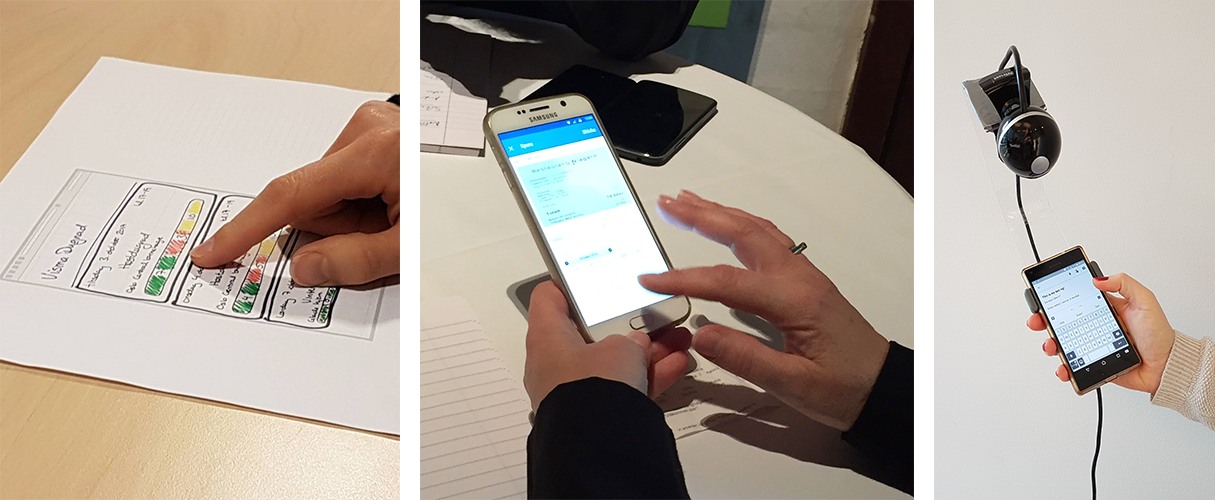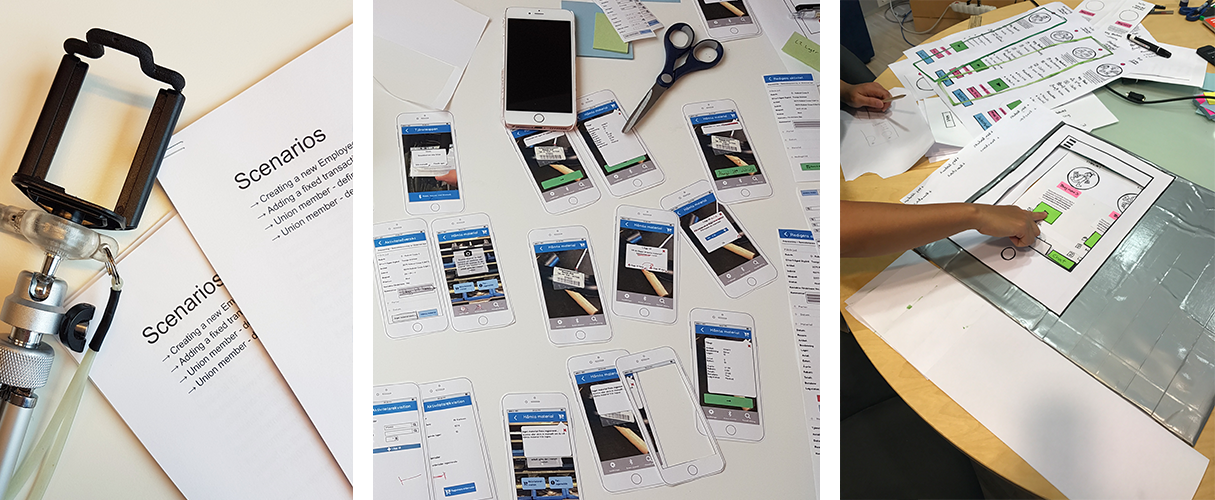Working in distributed teams, having customers in multiple countries can present a challenge when it comes to usability testing. As UX Designers, we think that the value of usability tests outweigh any cost – that it’s priceless, however, sometimes traveling to meet users is just not an option. But that does not have to mean that we can’t meet users, we just have to find other ways!
What is a user test?
As we write on our UX Portal, we believe that user testing is the best method to use when evaluating concepts, prototypes and implemented solutions. There are of course different ways of doing this, but we have created a general guide and collected some resources which are available to anyone working at Visma. Essentially, you meet a user (or potential user) either in person or remotely, and ask them questions and give them predefined tasks to complete using a prototype or implemented solution, with the goal of evaluating how easy it is for them to complete the task.

Why is usability testing important?
By meeting users and testing our concepts early, we give ourselves the opportunity to fail early. Believe it or not – that is a good thing! Because, if we find out what needs to be improved, what works and why, we give ourselves the chance to make our product better without having to spend a lot of resources on development just to realize that the solution didn’t solve the problem.
In other words, if we test early and continue to do so, we can be more sure that we are spending time on the right things.
The pros and cons of remote usability testing
Visma is a large company and we, as well as our customers, are spread out in many different countries. Traditionally usability testing has meant meeting the user in person, preferably at their workplace. However, being located in a different country can mean that this can become costly and time consuming. Especially since we UX:ers often want to bring a non-UX colleague with us so that they too can be part of the experience.
But fear not, we have come a long way and there are other ways to approach usability testing. Thanks to technology, we have an opportunity to meet users remotely. Remote usability tests have a lot of the same benefits as the traditional ones do. However, there are a couple of things you might miss out on when doing a remote usability test, such as some of the users body language and, of course, their surroundings. At least for now, until we have better hologram-technology to rely on!

With that said, if possible, we still recommend that you meet the user in person at their workplace to fully understand how they work with your product in their context, but if that is not an option, remote usability testing is a great way to get user feedback.
Continuing with the old school theme, we have created a pro-con list, comparing remote usability tests with traditional ones:
Pro’s
- Cheap: There is no need for travelling.
- Time-efficient: No need for travelling equals more time for testing!
- Inclusive: Meeting online makes it easy to include remote colleagues, being a few more people without making the user uncomfortable.
- Enables you to meet users that are far away, which increases you opportunity to test with the right target group.
- Easy to record the users screen (if they are sharing), which enables you to easily share findings with stakeholders.
- And the biggest pro of them all: The opportunity to improve based on real feedback! You get to meet with a user who can test a prototype or implemented design, whom you can ask follow-up questions. That’s priceless.
Con’s
- You’ll miss some important interactions such as facial expressions and body language.
- You can’t see the users work environment.
- You have bigger dependencies on having a good internet connection.
- You have to depend on the user being at least a little tech savvy and have access to the right technology to get the most out of it (videochat, access to camera, screen sharing, access to your prototype, etc). It takes some preparation!
- It can more difficult to show things to the user.
We can only speak for ourselves (and perhaps we’re biased), but we strongly believe that the pros far outweigh the cons. In other words, we think that remote usability tests are worth doing!

You can do this!
We write this blog post with the hopes of inspiring more teams and colleagues to conduct usability testing, and we want to emphasize that, even if you don’t have a dedicated UX Designer in you team, this is something that you can (and should) do.
To help you succeed, we have updated our method page about user tests with a comprehensive guide and several video examples and documents showing how it can be done. The guide involves everything from tips such as:
“Do not trust wi-fi! It’s invisible, mysterious, and comes and goes as it pleases. The good ol’ Ethernet cable is much more reliable.”
.. to hands on instructions for how to best set up the usability test.
We hope you enjoy it – Good luck!

Soma Azad, UX Designer

Amanda Lundius Mörck, UX Designer & Corporate UX Coordinator

